Earth Experiences #2: Critically Imperiled
Noticing the little things can turn out to be a big thing
My Substack is free, but writing is how I pay my bills and feed my pups. If you’d like to subscribe, please do! If that’s too big a commitment and you’d like to make a one-time donation instead (maybe a really good cup of coffee?), I would appreciate that, too. Many thanks for your support.
My youngest is finishing his degree in ecology at the University of Colorado - Boulder. An amazingly gifted musician, George went to Boulder in the middle of a global pandemic to study violin performance. But while he was there, he also unearthed his love for plants and, with my full support (because whatever he chooses to do with his life will be amazing), decided to change his major.
For the past two summers, he’s been given the opportunity to work at the Niwot Ridge Long-Term Ecological Research Program, where he studies grasses and flowers to his smart little heart’s content. (His heart will always be little to me. He’s my baby, after all.) Every morning, he goes up the mountain to do his life’s work. You can read more about that here if you’d like.
He calls his Mom pretty often because we like to shoot the shit about dogs and plants and PBR and all the important things in life. Last week, he told me a story I knew I needed to share. (I had him tell me the story twice so I could record it the second time. I knew I would never get the details right otherwise. So many ecology words.)
George and his boss were on the ridge, and they were walking along the one road that everyone uses every day. It takes them from the parking lot to the lab, which is the operational base for all their alpine plant work.
Everyone takes the same road every single day. (I repeated this because it’s an important part of the story. This is called foreshadowing. ;) )
George’s boss is a big fan of Gentiana prostrata (aka pygmy gentian), which is the tiny blue plant you see in the picture below. (George’s ecologist-violinist fingers for scale.)
As boss and student were walking and chatting and admiring the Gentiana prostrata, George noticed a cute little red mushroom nearby.
He got down on the ground to examine the mushroom (which has a great backstory), and he spotted an unknown plant in the vicinity.
“I’d never seen this particular plant, and neither had my boss,” he said. “So we ‘keyed it out’ and found out that it’s Carex microglochin.”
“Keyed it out,” apparently, is a term ecologists use when trying to determine what kind of plant they’ve happened upon.
So, here comes the fun part of the story…
Carex microglochin (also known as bristle sedge) had not been seen or recorded on the ridge for at least a decade or more. And it is, in fact, deemed a “critically imperiled” plant in Colorado. (It’s much more common in places like the Arctic Circle and Northern Alaska.) “Critically imperiled” means it has a very high risk of extinction or elimination.
“So, here we are just walking on this road that everyone walks along every day,” George explained, “And there it was. Carex microglochin. I didn’t even see it until I was on all fours with my face a few inches away from the ground. We’d been walking past this incredibly rare and critically imperiled plant every single day, and we never knew it was there. People drive UTVs all the time on this road. It could easily have been crushed, and we would never have known it existed there.”
“Do you think it’s the only one on the ridge?” I asked.
“Nah,” George replied. “You can assume if there’s one, there are likely more in the vicinity. Carex is rhizomatous, which means it can reproduce clonally through underground root structures without needing to be pollinated. But long-distance dispersal isn’t a probability, so the other individuals are probably close.”
And then I rewound the recording and looked up every other word that he had just spoken. This is how our conversations go now. George speaks way beyond my pay grade, and I look up all the words he says to make sure I’m spelling them correctly when I write them down. Typically, I understand about 20% of what he’s saying without consulting Google.
“What’s the benefit of finding this plant now?” I asked.
“Because we’re currently trying to confirm a species list on the mountain, and if we hadn’t found this little guy right now, he wouldn’t have made the list. No one would have ever even known about him. Now they will. And he’s a nice little bristle sedge. Sedges have edges, you know.”
“And snitches get stitches?” I asked. That’s about all I could contribute to the conversation.
But just think about that discovery. This little plant was so tiny and inconspicuous, it hadn’t been noticed or recorded for over a decade. Then, one day, because of a cute little red mushroom, George found it.
Now it has a name. It’s being recorded in a species list.
People will know Carex microglochin exists on an alpine ridge in Boulder, CO.
Isn’t that remarkable? And isn’t it such a lesson for all of us?
Sometimes, we just need to be seen. Maybe we’re standing in the shadow of a bright red, show-offy mushroom, but all it takes is one person to notice us waiting in the wings.
To call us by name.
To verify our existence.
To record and preserve it.
To say we matter.
Let’s do that for one another.
(And here’s my granddog, Henry, just because he’s so damn handsome in his reversible bandana.)


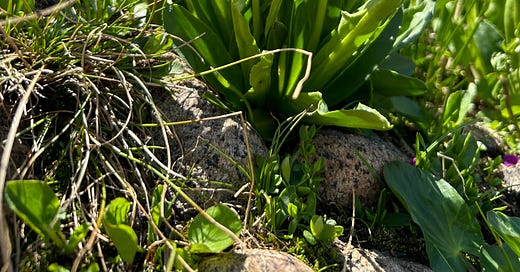



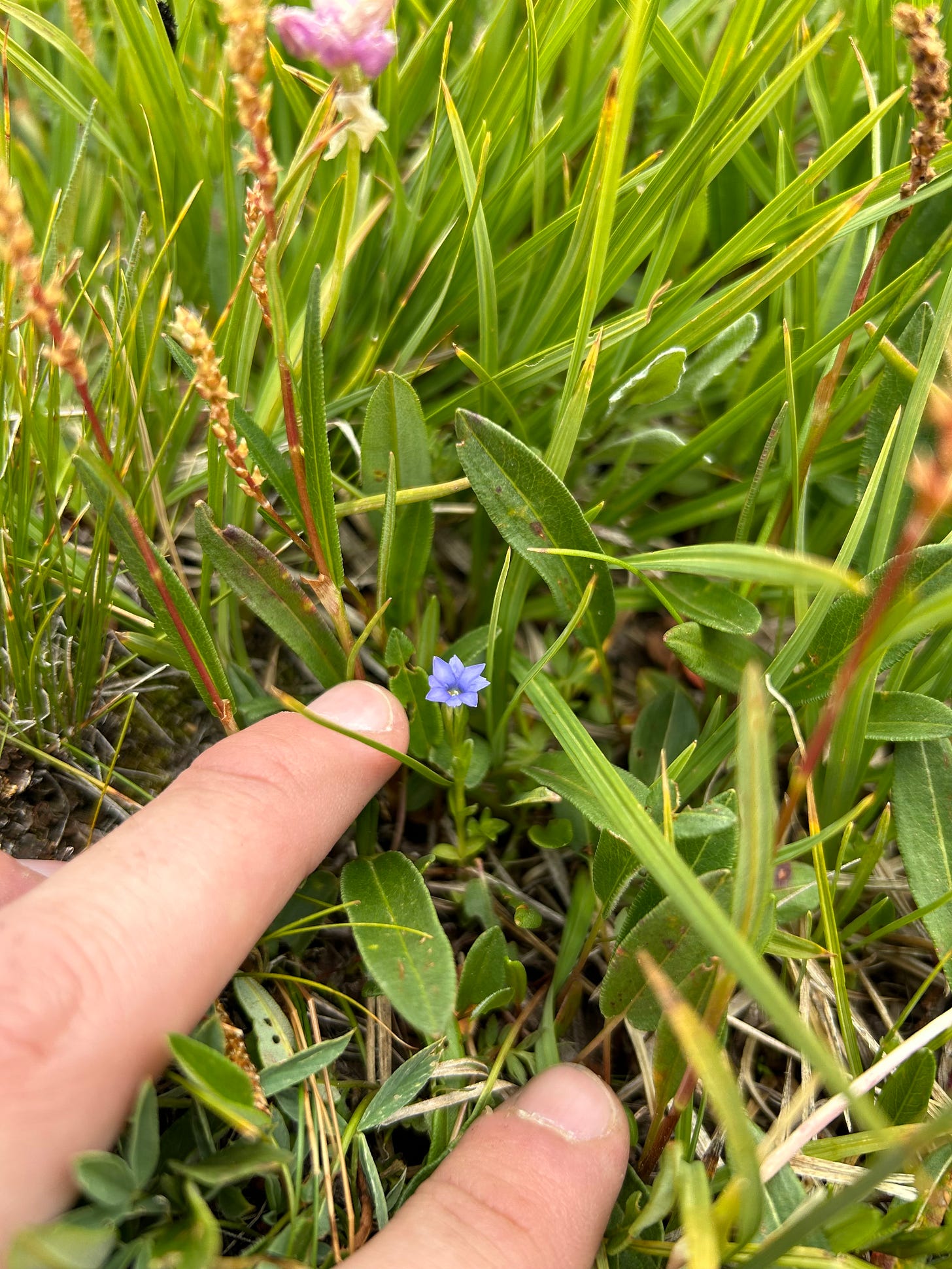
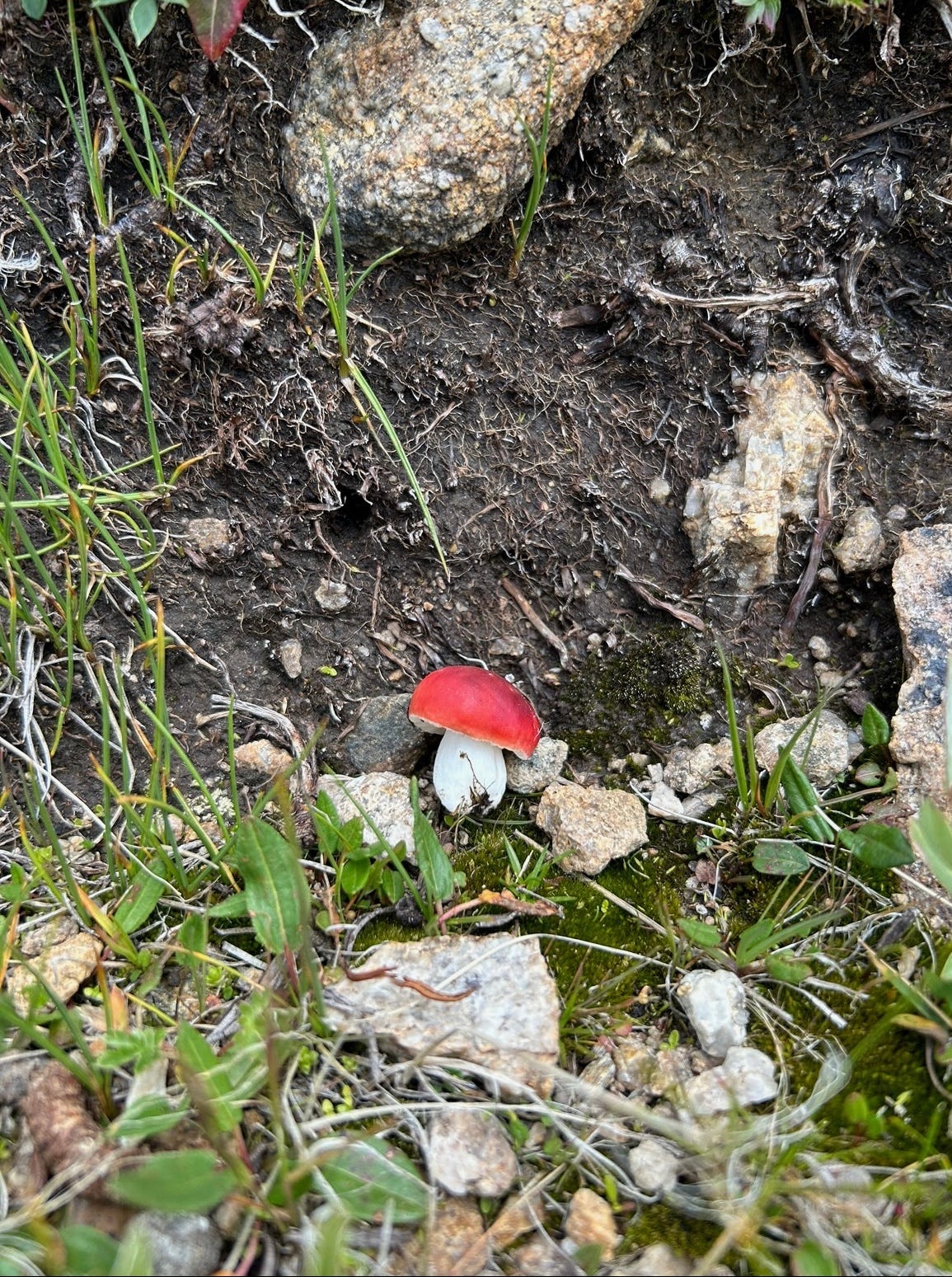
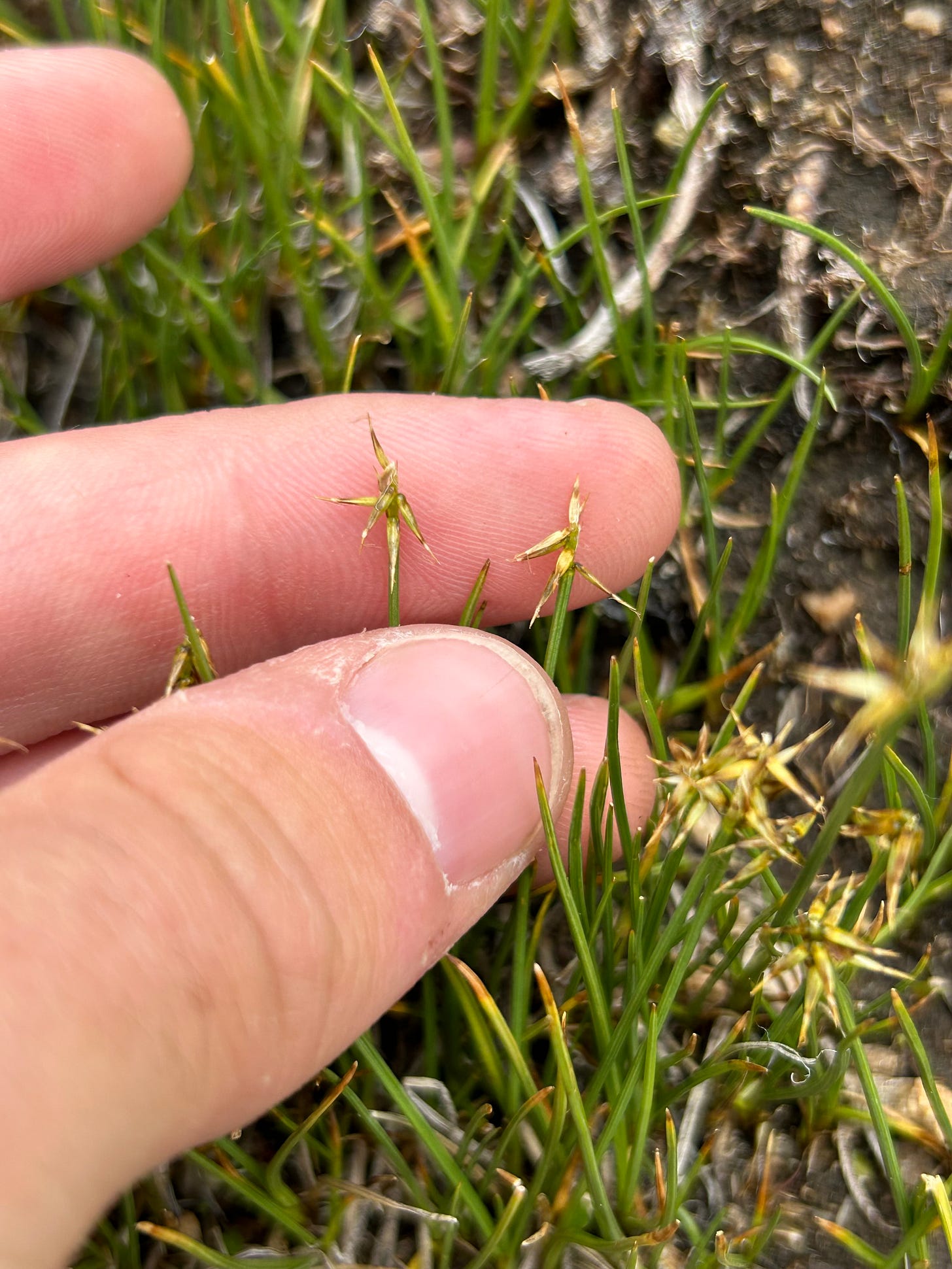
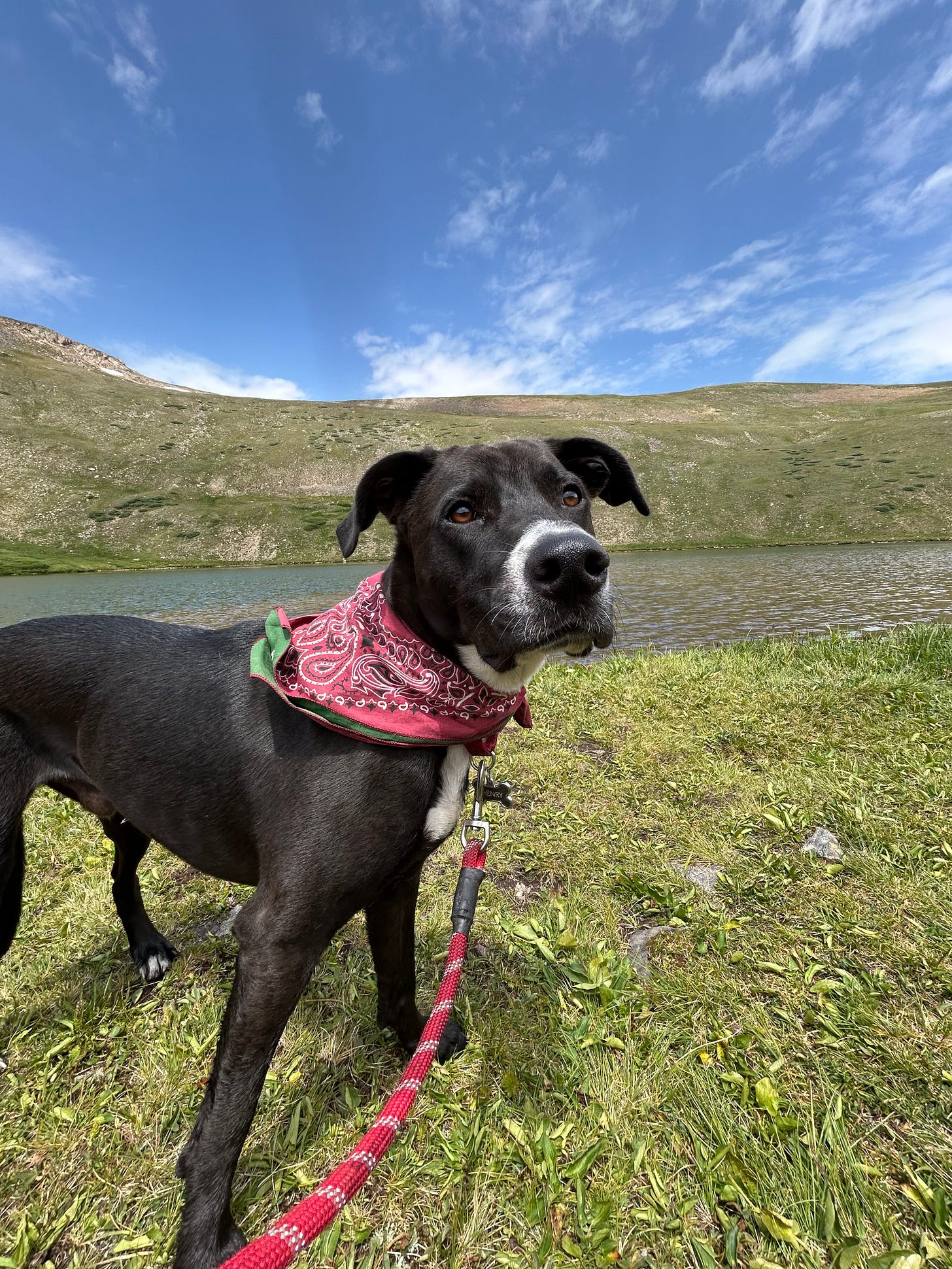
How wonderful that George is following his passion. My husband and daughter engage in “plant speak.” To be noticed, yes, 🙌🏼 and feel that we belong and our presence matters. Even if our names are too hard to pronounce, our essence remains. Your Thursday posts fill me, Katrina. 🌱🌿💜
I love this message so much. Thank you!
Also, I snickered at your "snitches get stitches" response. ☺️